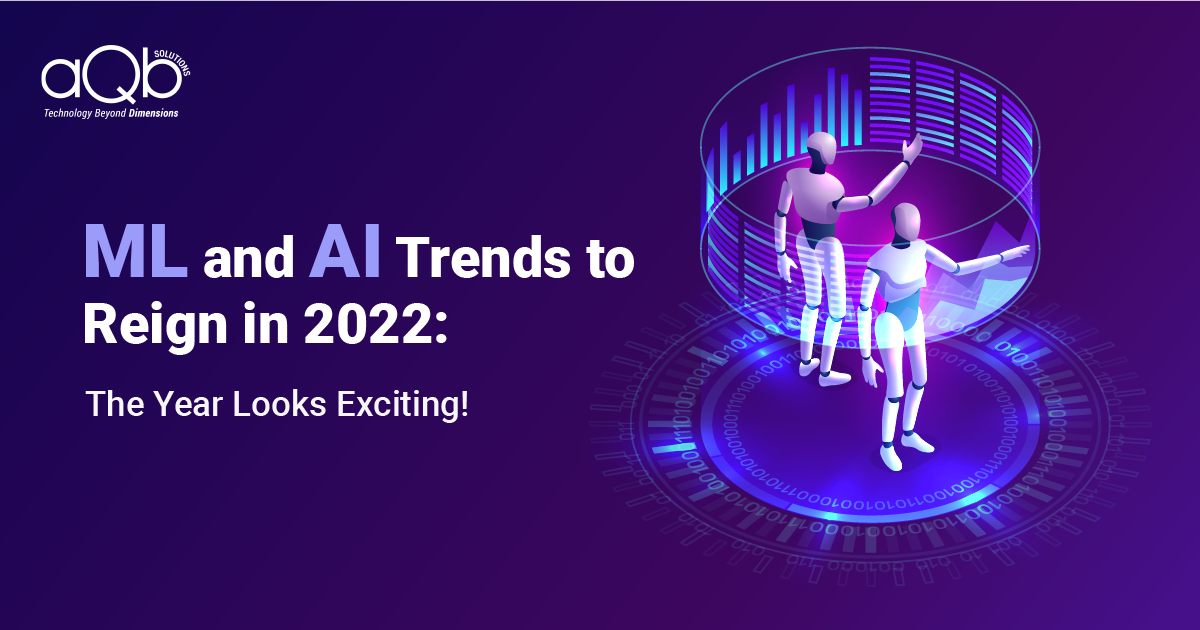There’s a lot of buzz about machine learning now, and there are good reasons for it. Machine learning is not only making things easier for organizations leveraging the technology, but also transforming the way business is done. For example, machine learning:
- Helps financial institutions to detect fraudulent activities quickly
- Helps manufacturers monitor equipment in order to address issues before operations are disrupted
- Allows streaming services to determine customers that may take their business elsewhere and helps to decide what needs to be done for retaining them
With rising volumes of data, cost-effective data storage, and more powerful and less expensive data processing, the applications of machine learning are set to grow massively.
However, it’s disheartening to note that the success rate is quite low for companies undertaking machine learning projects. Gartner says that 85% of projects on Machine Learning (ML) fail. Moreover, it predicts that this trend is likely to continue through 2022.
As an AI/ML solution developer, we have thought on why such a huge number of ML projects fail. Well, our AI/ML development experts have found that ML projects fail in several predictable ways that you can avoid with proper caution and expertise.
Why Machine Learning Projects Fail – Avoid Making the Following Mistakes

Through thorough research, we have found that there are some common mistakes companies make that result in failed ML projects. Let’s go through them to ensure that you avoid the common pitfalls in case of your ML project.
1. Not Understanding that Machine Learning is Different
To boost the chances of success for machine learning projects, the first step is understanding that ML projects are different from typical software and application development projects. The tools, workflows, terminology, and processes involved are different.
The staffing requirements are also different. The most important staff include data scientists who are more critical in defining the criteria for success, continuous monitoring, and final deployment of the ML model. Business intelligence specialists, data engineers, DevOps, and application developers also play key roles.
Not all organizations are equipped with the internal resources for filling all these positions. These organizations have the options of either hiring them, which is often difficult considering that ML is still a nascent field with relatively less experienced professionals, or outsourcing.
Even if your organization fulfils the staffing requirements, facilitating communication and collaboration between different teams can be difficult. Data science projects differ a lot from conventional application and software development projects. Software development is more measurable and predictable, whereas data science projects can involve experimentation and several iterations.
2. Using Data that is Not ML-Ready
This is another of the chief reasons why machine learning projects fail. Today, most companies are undergoing digital transformation, which means that they are generating data. There is an impulse in companies to use that data for machine learning projects. This comes from the incorrect notion that machine learning can derive insights from any information provided to it.
Machine learning can perform wonderful things with data, provided the data is ML-ready or “clean” data.
When we embarked on an ambitious journey to find a pattern from the handwritten notes of a doctor which he had carefully collected for years, we thought we were up to something. But soon, we found out that until we can clean up the data and also fill in some of the important gaps which he thought was quite obvious for a human, it will be very difficult to train the machine.
Another time, after putting a significant amount of effort, we realized that to attain a certain level of accuracy, we needed to know accurately a certain part of the picture which was missing and can be only measured after installation of special types of sensors. For machine learning to work, it needs to have the complete data.
Data can be disqualified in the test for ML-ready or “clean” data in many ways. For instance, the data may not represent your daily operations. You might leave a sensor switched on on a manufacturing equipment when the machine is off. Hence, the time spans of inactivity leads to corruption of the collected data.
Additionally, the data should be multifaceted enough that machine learning can detect meaningful patterns in it.
3. Failure in Collaboration With Operations Staff
Today, there are much more machine learning tools than before, and the knowledge of data science has increased. A skilled data scientist can easily have a sophisticated machine learning project on their laptop.
However, we have found that if a data science team works in an isolated way on a project, it can elongate the path to success.
It’s easy to run into unexpected problems unless the people handling the project are well-experienced. And it’s also possible to get way ahead in the project before realizing that you aren’t prepared well.
It’s crucial to make sure that the experts of the domain, the plant operators or process engineers, are involved in the process since they have a good understanding of its intricacies and the related data’s context. So, proper collaboration among the right people is the key.
4. Machine Learning is Used for Solving a Random Problem
The interesting technology that ML is, makes some companies tempted to do something with the technology without having a clear idea of what exactly they want to do.
Companies evaluate recurring problems and current business objectives and tend to assume that ML is the solution.
Nevertheless, machine learning is not the solution for all problems.
We have found that not understanding this is one of the common reasons why machine learning projects fail.
Some possible machine learning applications haven’t been tried out ever, and thus, should be considered as experiments. In some cases, an issue that might be fixed with machine learning could be resolved more cost-effectively using another way.
Companies should first determine the operations or business challenge they are trying to solve before hopping on to ML.
Determine if you can answer the following questions when choosing an AI use case:
- Are the ROI and benefits measurable?
- Can you scale the use case to other similar processes?
Following this process will help you determine if ML is the best option to address your major challenges. Quite often, ML would be the way to go. However, if you use ML for an arbitrarily selected problem, you don’t get a guarantee that it will be worth your investment.
5. Lack of Data Strategy
Once our AI/ML development team had a chance to talk to the Principal Data Scientist of a Large Consumer Durable company when he was expressing his concern about how lack of data is often a roadblock for them, whereas companies like Uber are killing it.
In such cases, we can help companies get an understanding of their total data and guide them on crafting a proper data strategy.
The MIT Sloan Management Review says that only 50% of large organizations with over 100,000 employees are likely to be equipped with a data strategy. It’s important to craft a proper data strategy before starting an ML project.
As part of a data strategy, it’s necessary to have a good understanding of the following:
- Your company’s total data
- How much of this data is actually needed for projects
- How can this data be accessed by the required people, and how easily can it be accessed by them
- Specific strategy on gathering all these data
- How to clean up as well as transform these data
Most companies begin without having a proper plan in place, or don’t start at all thinking they don’t have data.
How to Increase Your Chances of Success in ML Projects?
Since the advent of machine learning, we have been working on AI/ML projects. From the experience we have gathered in all these years, we have found various ways you can avoid several of the issues which can take you closer to failure.
These ways are as follows:
- Understanding the working of machine learning, how ML projects differ from other projects, and the things needed for executing an ML project
- Large quantities of preferably labeled data
- The resources required for running an ML project, which include experienced outsourced or in-house team members, and open communication and proper collaboration
- A properly scoped project that has leadership support, and realistic goals and budget
- Capabilities to collect, store, label, clean, quickly access, and process large data volumes
- Allowing a human to examine the ML system and interfere at any point in time
- Advanced tools for ML models as well as data monitoring
- A development platform, like AWS, Microsoft, IBM, or Google
- Software tools to execute ML algorithms, such as IBM Machine Learning, Google Cloud AI Platform, TensorFlow, Amazon Machine Learning, Neural Designer, Azure Machine Learning, and more
Following these ways can prevent your ML project from derailing and boost your chances of success.
Wrap Up
If you want to leverage the benefits of machine learning to the fullest without any fear of failure, consider relying on a reputed machine learning solutions provider. aQb Solutions is a leading IT firm with expertise on AI/ML. With a decade-old experience in developing AI/ML solutions, we build highly innovative and robust AI/ML solutions for businesses of diverse industries. If you have an ML project in mind, proceed with confidence with our expertise!




